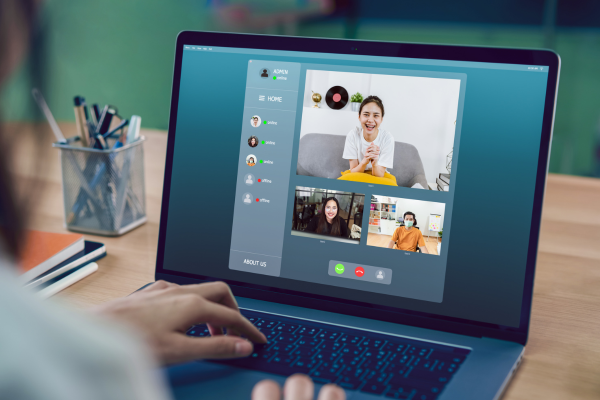As a freelancer, effective client communication is the key to success. The ability to understand and meet your client’s needs while maintaining a strong professional relationship is crucial. Communication skills play a pivotal role in ensuring that projects run smoothly, expectations are managed, and client satisfaction is achieved. In this article, we will explore the art of effective client communication for freelancers, discussing various strategies and techniques that can enhance your ability to communicate effectively with clients.
I. Building Rapport: The Foundation of Effective Communication
Building rapport with your clients is the first step towards effective communication. It helps establish trust and mutual understanding, which are essential for a successful working relationship. Start by taking the time to get to know your clients, their businesses, and their goals. Show genuine interest in their projects and ask relevant questions to gain a deeper understanding. This will not only demonstrate your professionalism but also allow you to tailor your communication to their specific needs.
Furthermore, maintaining a friendly and approachable demeanor is key to building rapport. Clients are more likely to communicate openly and honestly when they feel comfortable with you. Be attentive, empathetic, and responsive to their concerns and feedback. By creating a positive and welcoming environment, you can foster a strong rapport that will benefit your client communication.
II. Setting Clear Expectations
Clear communication of project expectations is vital to avoid misunderstandings and ensure that both parties are on the same page. When discussing a new project with a client, take the time to outline the scope, deliverables, deadlines, and any other relevant details. Provide a detailed project proposal or contract that outlines the agreed-upon terms. This will serve as a reference point throughout the project and help manage expectations from the start.
During the initial conversations, encourage your clients to share their specific goals and preferences. This will allow you to align your communication and deliverables accordingly. Additionally, discuss the expected communication frequency and preferred communication channels. By setting clear expectations upfront, you can minimize confusion and prevent potential issues that may arise due to misaligned expectations.
III. Choosing the Right Communication Channels
Selecting the appropriate communication channels is essential for effective client communication. Consider factors such as the urgency of the message, the complexity of the topic, and your client’s preferred mode of communication. Email is often a reliable choice for formal communication, providing a written record of discussions. However, for quick updates or clarifications, instant messaging tools or phone calls may be more suitable. Adapt your communication channels to align with your client’s preferences to ensure seamless communication.
Additionally, be mindful of the availability and time zones of your clients. If you are working with clients from different regions, coordinate your communication accordingly to accommodate their working hours. By utilizing the right communication channels and being considerate of your client’s circumstances, you can enhance the effectiveness of your communication.
IV. Active Listening: The Key to Understanding Client Needs
Active listening is a fundamental skill that every freelancer should master. It involves giving your undivided attention, asking clarifying questions, and summarizing what the client has said to ensure understanding. By actively listening, you can gain valuable insights into your client’s needs, concerns, and expectations. This allows you to deliver solutions that precisely meet their requirements, fostering client satisfaction and loyalty.
During client meetings or discussions, focus on the client’s words, body language, and tone of voice. Avoid interrupting and be patient. Take notes if necessary to capture important details and demonstrate your attentiveness. When seeking clarification, ask open-ended questions that encourage your clients to elaborate on their thoughts. By practicing active listening, you can uncover underlying needs and provide tailored solutions that exceed client expectations.
V. Timely and Transparent Updates
Regular and transparent updates are essential for keeping your clients informed about the progress of their projects. Set realistic milestones and deadlines, and communicate any changes promptly. Be proactive in providing updates, even when things are going well. This not only reassures your clients but also demonstrates your professionalism and dedication. When challenges arise, communicate them promptly and propose solutions. Timely and transparent communication builds trust and ensures that your clients feel involved and engaged throughout the project.
Utilize project management tools or collaboration platforms to facilitate transparent communication. These tools allow clients to track the progress, provide feedback, and have a centralized location for project-related discussions. Additionally, establish a regular communication schedule, such as weekly or bi-weekly progress updates. By providing timely and transparent updates, you can strengthen your client relationships and foster a sense of trust and reliability.
VI. Managing Difficult Conversations
In the course of your freelancing career, you may encounter challenging conversations with clients. It is crucial to approach these situations with tact and professionalism. Remain calm and composed, and focus on finding mutually beneficial solutions. Address concerns and disagreements directly and respectfully, without being defensive. Seek to understand the client’s perspective and work together to find common ground. Managing difficult conversations effectively can help preserve the client relationship and strengthen trust.
When faced with a difficult conversation, prepare beforehand by identifying the main issues and potential solutions. Approach the conversation with empathy, understanding that the client’s concerns are valid. Listen actively and validate their emotions before proposing solutions. Maintain open lines of communication and be willing to negotiate or make compromises when appropriate. By handling difficult conversations with professionalism and empathy, you can turn potential conflicts into opportunities for growth and collaboration.
Conclusion
Effective client communication is an art that every freelancer must master. By building rapport, setting clear expectations, choosing the right communication channels, practicing active listening, providing timely updates, and managing difficult conversations, freelancers can establish strong and successful client relationships. Remember that effective communication is a continuous process that requires constant effort and improvement. By honing your communication skills, you will enhance your ability to understand and meet your clients’ needs, leading to increased client satisfaction and long-term success as a freelancer.



